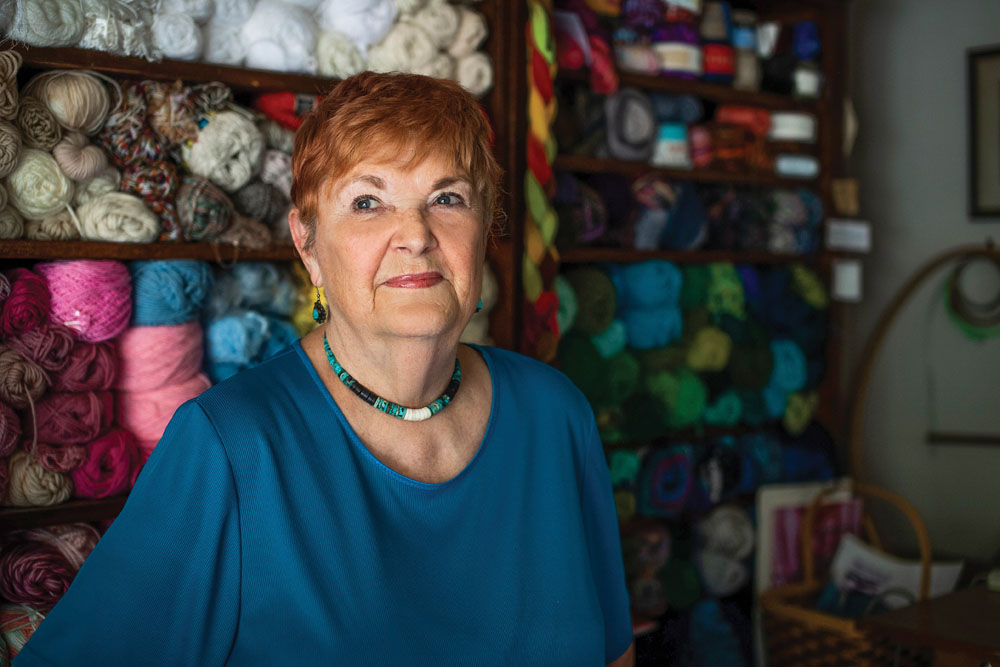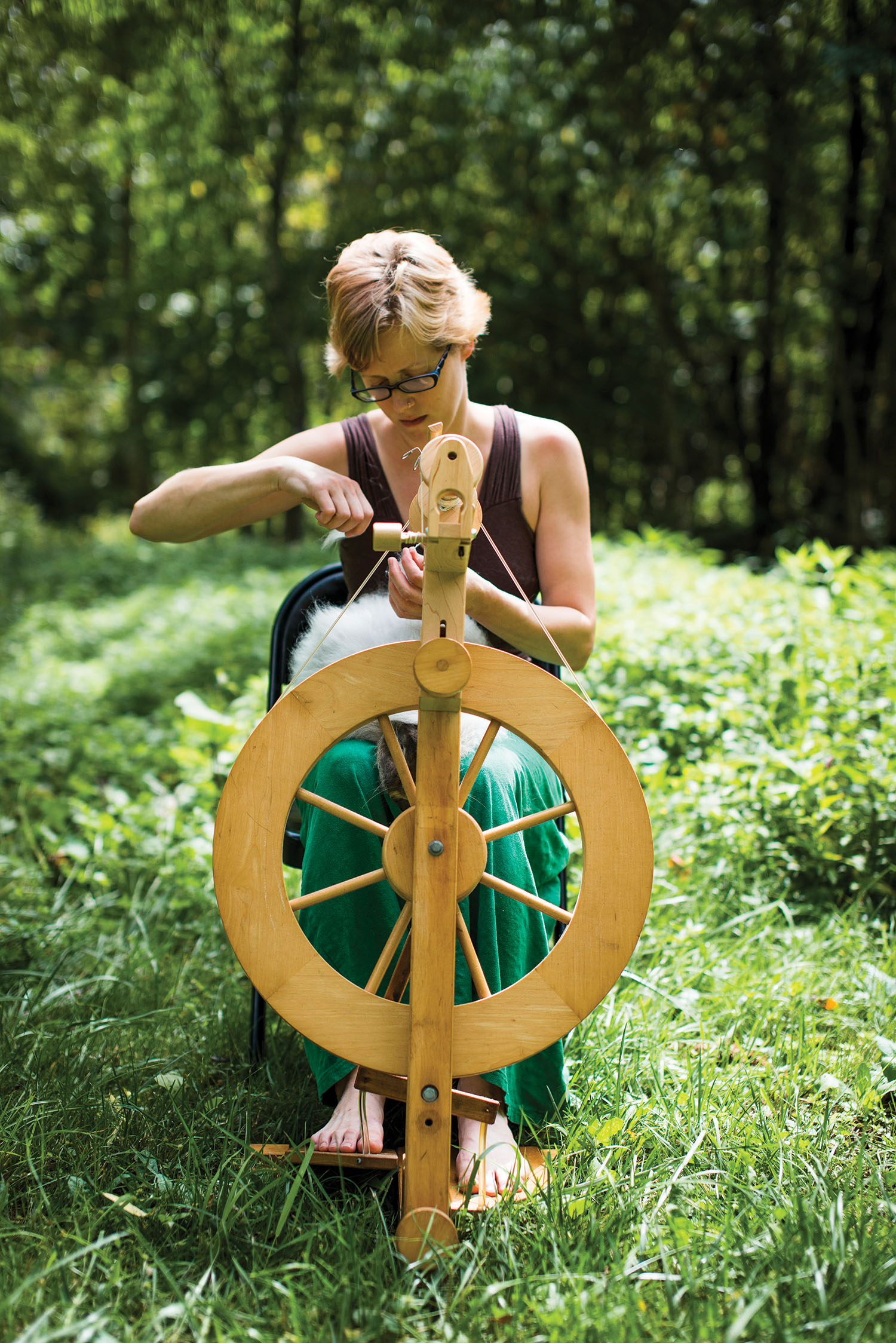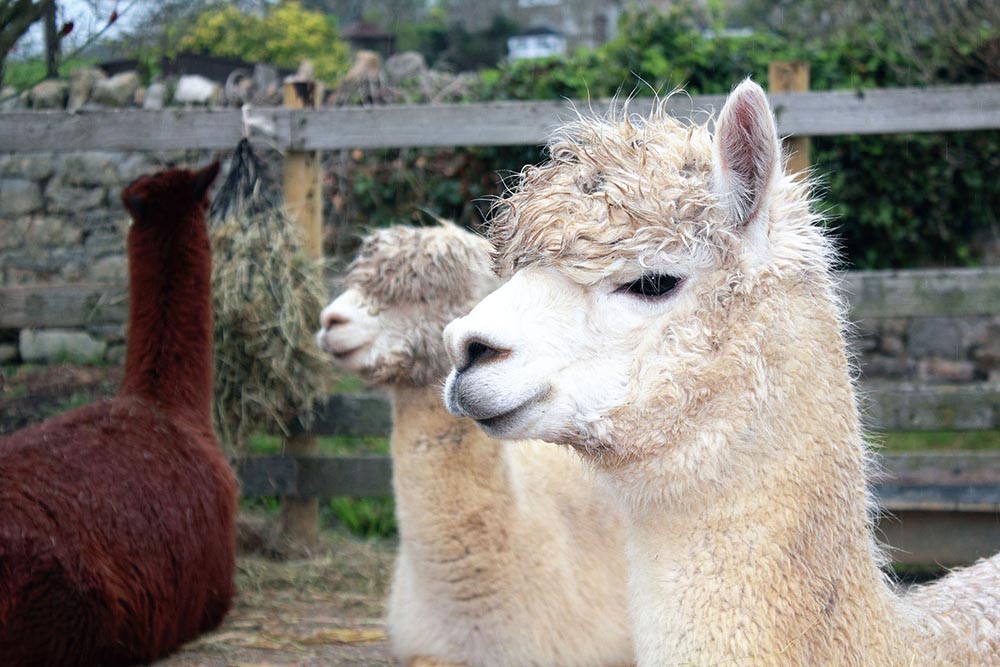
Crocheting a comeback: The so-called “granny square” is suddenly a staple of high fashion, and local textile artist Rita de Maintenon teaches her students how to achieve the bohemian-chic look. Photos by Karin Strickland
Fashion is cyclical. Trends are here today, gone tomorrow, and back in full force four presidencies later. There’s no better example of this than the iconic granny square.
A block of crocheted fabric normally no larger than six-by-six inches, the granny square was first introduced to the world in an 1897 edition of Weldon’s Practical Needlework, a popular Victorian magazine based in England.

In the article, writers applaud the pattern (then called a “patchwork square”) for its simplicity and transportability. A lady might crochet a square in the garden, another two or 20 in the study, and even more during a long carriage ride. The individual squares, or “motifs,” could then be stitched into a sprawling quilt at the damsel’s leisure.
By the 1940s, folks worldwide were crocheting everything from quilts to caps to cardigans. Of course, most makers were family matriarchs, hence the tongue-in-cheek moniker.
After the crisply artificial silhouettes of the 1950s and the Mod era of the early and mid 1960s, granny squares had a major resurgence in the late ’60s through the ’70s as part of back-to-the land boho culture, along with prairie dresses, peasant blouses, and knit ponchos.

Traditional and contemporary handmade wearables are an important part of the Southeastern Animal Fiber Fair, along with livestock exhibitions, a fleece show, and demos that show the full-circle nature of fiber art.
But at the turn of the following decade, the style again “fell out of favor,” says Fletcher-based fiber artist, educator, and historian Rita de Maintenon. “I don’t remember too many of them in the 1980s or ’90s.”
However, something peculiar happened during Milan Fashion Week Spring 2020 (held the previous fall): Granny squares hit the runway. “I saw everything from jackets to wraps to bell bottoms made from granny squares,” confirms de Maintenon.
Since then, celebrities like Harry Styles, Chrissy Teigen, Gigi Hadid, and Dominic Fike have rocked crocheted tops with pleated pants and pearls, achieving the so-called “grannycore aesthetic.” Eventually, youth lifestyle brands like Altar’d State and Urban Outfitters jumped on board, peddling granny-square-inspired couture to the masses.
“It’s a full-on revival,” quips de Maintenon.

But authentic granny squares are still made at home, and the current craze can be traced back to quarantine, when millions of bored, scared, and largely unemployed people turned to fiber arts to pass the time. (According to a study conducted by The Guardian, the pandemic saw a 140-percent spike in crocheters.)
Post-pandemic, granny squares have endured because of their “versatility,” says de Maintenon. “If you understand the basics of crocheting, there are unlimited possibilities,” she says. “You can create blankets, wearables, purses, and so much more.”
With this in mind, de Maintenon will offer a workshop on granny squares during the Southeastern Animal Fiber Fair this fall: how to create them and connect them to make clothing and accessories.
“I’ll be applying heritage techniques to more contemporary pieces,” explains de Maintenon, who learned to crochet as a young girl living in post-World War II Germany.
“In doing so, I’ll be preserving the past and moving it forward.”
The Southeastern Animal Fiber Fair (WNC Agricultural Center, 1301 Fanning Bridge Road, Fletcher) happens Friday, Oct. 20 through Sunday, Oct. 22, with animal exhibitions, a fleece show and sale, demos and vendors, and more than 100 workshops. “Great Granny Square Creations” happens Saturday, Oct. 21, 1-4pm in Expo 12. Cost is $75. For more information, visit saffsite.org. To learn more about de Maintenon, visit heirloomtreasuresfiberarts.com.



You never cease to amaze me! I have never met such an interesting individual. Your pieces are beautiful. The repairs that you do on family heirlooms, keep the pieces alive for the next generations. I’ve seen so much of your work throughout the years, and I’m glad to call you my friend.
I loved the article. Your craft totally amazes me. I have seen so much of your work over the years, and am in awe of the heirloom pieces that you repair, for generations to enjoy. I am so fortunate to have enjoyed your friendship over the years, and have followed your many interesting paths.